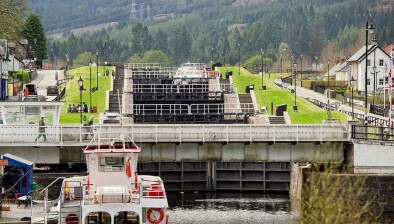Blog: Back to the Future?

After attending a public-interest led development seminar hosted by the Scottish Land Commission in Glasgow last week, Keith Geddes outlines what the public sector can do to demonstrate it can deliver transformational change.
Quality places are important in attracting investment, says the Scottish Government’s Council of Economic Advisors.
Place, they argue, should be one of the principles which underpins any inclusive growth policy.
Quality places attract quality investment and quality employment.
In a global economy, investors have a choice about where to invest and degraded landscapes are a positive turn off.
The Scottish Land Commission is looking at Public Interest Led Development to make more of Scotland’s land through a partnership approach between the public and private sectors working with local people and communities of interest.
The Commission points to the Dundee Waterfront development as a prime example where a local authority is working with Scottish Enterprise and in consultation with the local community to deliver transformational change.
In the decades following the Second World War, the public sector had a track record of promoting change, for example it was instrumental in developing new towns.
However, a shift in favour of free market economics - particularly following the election of the 1979 Thatcher government - diminished the public sector’s role.
From being proactive, the planning profession has gradually become a reactive and regulatory profession, eschewing creativity for process.
The Dundee Waterfront project and other innovative projects such as Winchburgh Village and the Scottish Canals regeneration project in North East Glasgow, have reignited interest in public interest-led development.
And the Planning Bill currently making its way through Holyrood, together with the review of Scottish Planning Policy, could act as the midwife for the public sector to again become the prime mover in major developments.
So what are the ingredients needed for the public sector to demonstrate it can deliver?
A shared vision is essential.
Major developments may have a 20 year development phase, so cross party support is of particular importance.
Political buy in provides stability and leadership giving certainty to private sector investors that the project will be delivered.
Secondly there needs to be a multi skilled team in place.
Planners need to be supplemented by economists, quantity surveyors, housing experts with buy-in from statutory agencies such as SEPA.
Thirdly, training for planners needs to be broadened, moving away from a process-driven, tick-box profession, to a becoming a proactive profession that promotes creativity and works in partnership with colleagues within and beyond their own local authority.
And planners need to engage with communities working with them through charrettes to create masterplans that can be delivered.
Finally there is a need to invest in planning.
Reductions in local government budgets have led to significant loss of experienced planners as many take early retirement.
When giving evidence to the Local Government and Communities Committee, Planning Minister MSP, Kevin Stewart MSP, was asked what he thought the core purpose of planning was.
His response was that “the core purpose of planning is to create great places. It is about ensuring that we achieve sustainable economic growth and that we have the jobs we need for our economy to thrive”.
Such sentiments should be clearly echoed in the planning legislation.
It would provide a clear lead to those involved in the development process that planning is not about reacting to individual applications but is about creating quality places and quality communities.














